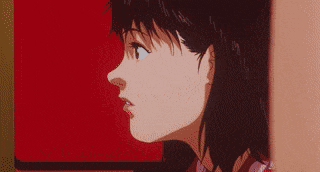Azul perfecto, dirigida por Satoshi Kon (今敏) y lanzado en 1997, es uno de los más escalofriantes y películas de anime psicológicamente intrigantes. Sigue el deterioro mental de nuestro personaje principal, Mima Kirigoe, quien, después de dejar su grupo de ídolos pop, “CHAM!”, se convierte en el objeto de deseo de un fan hastiado y altamente delirante.
La película ha sido elogiada por su increíble uso de transiciones que distorsionan la mente y comentarios críticos sobre relaciones parasociales asesinas. Sin embargo, quiero hablar sobre el uso del color en la película, específicamente el color rojo. Puede parecer un tema mundano para discutir, pero el uso del color es increíblemente importante en la forma en que los medios visuales cuentan su historia.
¿Qué son los arquetipos de color?
Un arquetipo es una idea recurrente que se encuentra en todas las narraciones mitológicas. Los arquetipos son planos básicos sobre los que se construyen las historias. La idea de un héroe y un villano es uno de los arquetipos más antiguos que se ha utilizado en la ficción incluso antes de que se inventara la escritura.
Los colores también tienen sus propios arquetipos asociados a ellos, al igual que otras herramientas narrativas. El rojo, por ejemplo, se ha asociado con la muerte por su conexión con la sangre o la idea de ser feroz.
Perfect Blue usa el rojo de una manera inesperada pero única que agrega una capa de matices a la película. Si no lo notaste en tu primer reloj, no te preocupes, yo tampoco. Símbolos como estos generalmente operan en un nivel inconsciente para el observador, pero una vez que se dan cuenta, crean una nueva apreciación por la atención al detalle del director Kon.
El descenso de Mima
Red a menudo se muestra junto con Mima perdiendo la cordura, especialmente durante las transiciones donde la línea entre la realidad y la ficción es borrosa. Después de leer "La habitación de Mima", un sitio web que registra inquietantemente la vida cotidiana del personaje principal, la frase "disculpe, ¿quién es usted?" se repite con un fondo rojo de llamativa intensidad.

Esta escena cambia rápidamente a Mima en un set de filmación, repitiendo esas palabras exactas. Esto demuestra la frágil psique del personaje principal y cómo su admirador obsesivo la está minando. A Perfect Blue le encanta jugar con las expectativas de la audiencia haciendo que la realidad parezca ficción y la ficción como realidad.
¿Ficción o Realidad?
Mima comienza a protagonizar una película de detectives llamada "Double Bind" donde la narrativa ficticia que se cuenta refleja su vida real. Llega al punto en que a menudo es difícil saber si una escena en Perfect Blue realmente está sucediendo o si es una subtrama dentro de Double Bind.
Estas escenas se muestran regularmente con el color rojo presente en alguna parte, lo que refuerza el hecho de que se está produciendo un escape de la realidad. La película continúa jugando con esta idea al hacer que el estrés de Mima se manifieste en alucinaciones de su pasado como cantante ídolo.
Las ilusiones de Mima
A lo largo de la película, Mima se enfrenta a estas ilusiones que la atormentan por dejar CHAM. y el color rojo se usa con gran efecto para resaltar su psique dividida.
Después de filmar la escena de la violación en Double Bind, una vez más lee La habitación de Mima, que está escrita falsamente, que Mima está siendo obligada a filmar y ya no quiere hacerlo. Estos no son los verdaderos sentimientos de Mima, sino la narrativa retorcida que está escribiendo su fan acosador.
Esto se manifiesta en otra alucinación en la que el ídolo pop Mima se burla de la actriz Mima por ser una mujer que tiene muchas parejas sexuales ocasionales. Los volantes de color rosa rojizo en el vestido de la ilusión junto con el lazo rojo continúan sugiriendo el papel fundamental que tiene ese color en la historia.
Conclusión
Un gran uso del color no solo es visualmente atractivo, sino que también puede mejorar la narrativa que se muestra. La próxima vez que veas un anime, presta especial atención a cómo la elección de colores del director afecta tu experiencia visual.
Biografía del autor:
Actualmente asiste a la Universidad de Arizona para la ciencia de la información, Julian está interesado en analizar el arte y discutir temas filosóficos.

